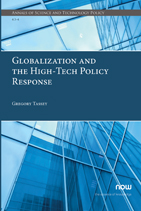Globalization and the High-Tech Policy Response
By Gregory Tassey, Economic Policy Research Center, University of Washington, USA, gtassey@outlook.com
Abstract
This monograph argues that (1) U.S. economic growth policy has not responded to the relentlessly growing competitive pressures from globalization, as evidenced by declining real GDP growth and (2) the policy solution is to create a more high-tech economy. This argument is dramatically supported by the fact that high-tech workers make almost twice as much as the average for all workers. However, they account for only 6 percent of the workforce. So, the promotion of high-tech investment and support for a high-tech labor force is imperative.
Specifically, investment is required in four major categories of assets: technology, “fixed” capital (hardware and software), highly skilled labor, and an intellectual, financial, and management infrastructure. All four assets must be integrated into functional ecosystems that, due to the complexity and variety of modern technologies, require technology specialization by state/regional “innovation clusters”.
Among the current areas of underinvestment, the secular decline in federal R&D intensity is a particularly serious problem, given a national government’s critical roles in funding scientific research and helping innovation clusters develop new technology platforms. At the national level, this means pursuing an R&D intensity of 4 percent and dramatically expanding direct Federal support for state technology-based economic development.
Globalization and the High-Tech Policy Response
Globalization and the High-Tech Policy Response makes the case that U.S. economic growth policy has not responded to the growing competitive pressures from globalization. Specifically, the federal government has placed excessive reliance on business-cycle management and recently on trade barriers in the form of tariffs to allegedly force access to foreign markets for U.S. firms and repress unfair trade practices by foreign governments. The correct policy response requires an investment-oriented approach that targets the four major categories of assets that drive productivity growth and hence incomes: (1) technology, (2) physical and intellectual capital (hardware and software), (3) skilled labor, and (4) a high-tech infrastructure to support the first three asset categories. The focus of this monograph is the characterization of these four asset categories and the economic rationales for emphasizing investment in them. It systematically documents and analyzes the set of policies and investment trends and resulting impacts on rates of growth over the post World War II era. These trends highlight a very inadequate growth policy, which is the result of failing to admit that America’s dominant post-war position in the global economy has been steadily eroded by superior growth strategies in other economies.
